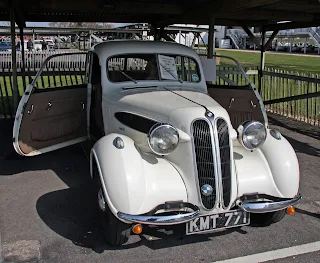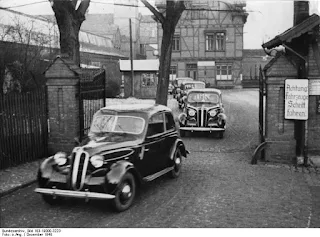The BMW 326 is a medium-sized sedan produced by BMW between 1936 and 1941, and again briefly, under Soviet control, after 1945. The 326 was BMW's first four-door sedan. It had an innovative design and sold well despite its relatively high price. It also had an unusually involved afterlife.
Designed by Fritz Fiedler, the 326 featured a box-section frame that could readily be adapted for derivative models. Also innovative were the torsion bar rear suspension, inspired by the dead axle suspension of the Citroën Traction Avant, and the hydraulic braking system, the first to be used on a BMW car. Styled by Peter Schimanowski, the 326 was offered as a four-door sedan and as a two- or four-door cabriolet. The 326 sedan was the first BMW available with four doors. The BMW 320, BMW 321, BMW 327, and BMW 335 were based on the 326. The streamlined form of the body contrasted with previous relatively upright BMWs: drag was presumably reduced further by including a fixed cover over the spare wheel at the back.
326 sedan and cabriolet 1945–1946 (limited production following World War 2)
321 sedan and cabriolet 1945–1950 (resumed production after World War 2)
327 coupé and cabriolet 1945–1955 (resumed production after World War 2)
340 sedan 1949–1953 (later cars badged as EMW 340)




















.jfif)

No comments:
Post a Comment